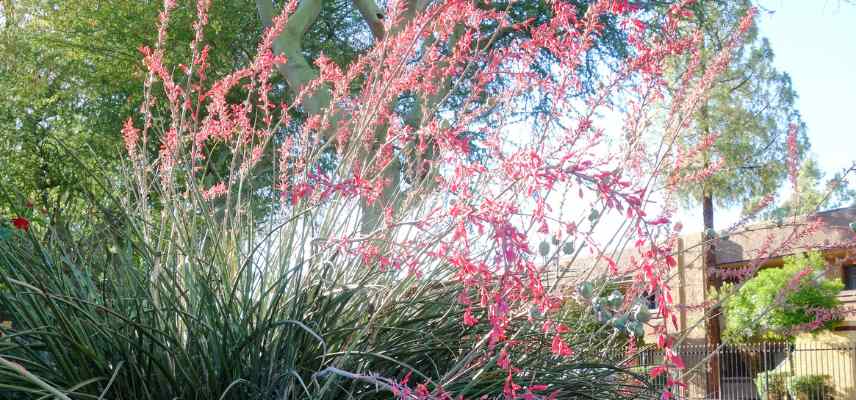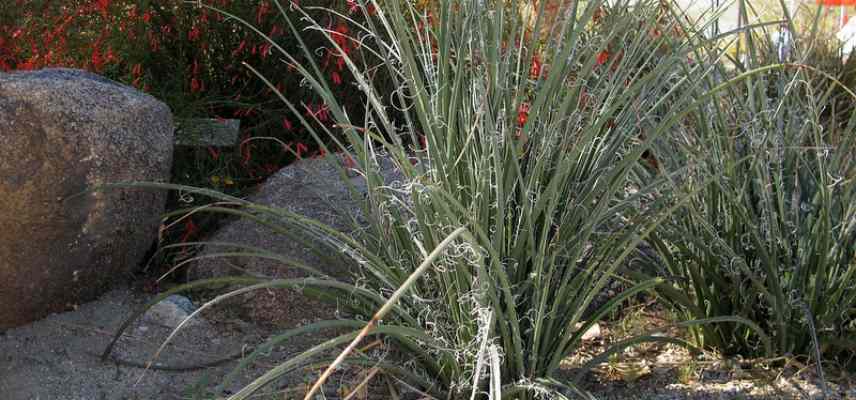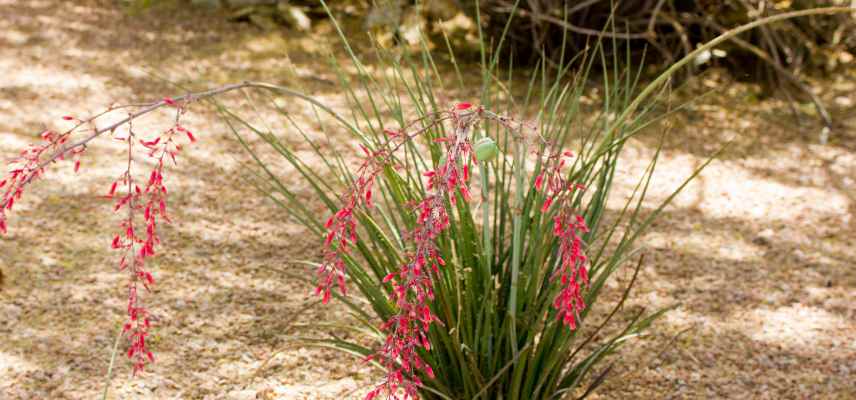Discover Hesperaloe parviflora or coral yucca, a botanical marvel from the arid regions of North America! This succulent plant, exceptionally hardy, bears delicate foliage and vivid red flowers, making it a true desert gem. Adapted to the driest climates, this false yucca needs only minimal attention to reveal its full beauty. And what if I told you it is possible to multiply this perennial without spending a penny? Follow the guide and be charmed by the propagation secrets of the red yucca.

Required equipment
- A knife well sharpened
- potting compost for cacti
- Planting pots
- A watering can
- Rooting activator (optional)
- A spade or a transplanter
Propagation by division of clumps
Division of clumps is the quickest and easiest method to multiply Hesperaloe. It allows you to create several new plants from a single parent plant. The best time to divide Hesperaloe is in spring or autumn, when temperatures are moderate and the plant is not in heavy flowering.
Preparing the parent plant
The day before the operation, water the parent plant lightly. This will make extraction easier by loosening the soil around the roots. Slightly moist soil also helps minimise damage to the roots during extraction.
Ensure parent plant is healthy before dividing. A stressed or diseased plant will have more difficulty recovering after division.

Removing the plant
Use a spade or a transplanter to loosen the soil around the base of the plant. Lift the plant gently, taking care not to damage the roots. If the plant is in a pot, ease the plant out carefully by tilting the pot and tapping the sides to detach the roots from the rim.
Dividing the clumps
With a clean, well-sharpened knife, separate the clumps into several sections. Ensure each section has well-developed roots to maximise chances of survival. Cut between the roots, taking care not to damage them. Each division should have enough roots and foliage to continue growing independently.
Planting the divisions
Prepare pots with potting compost for cacti, which is well drained and suited to Hesperaloe's needs. Remember that these pots must have drainage holes.
Plant each division in a pot, ensuring the roots are well covered with compost. Firm the compost lightly around the base of the plant to secure it.
Water lightly to help the roots settle into their new substrate. Place pots in a bright spot, sheltered from direct sun until the new plants are well established.

Propagation by sowing
This method is longer, but allows you to obtain many new plants.
- Harvesting seeds: collect seeds from ripe seed capsules (brown, open capsules). Hesperaloe seeds are black and shiny. You will usually harvest them at the end of summer or the start of autumn. If you do not sow immediately, make sure seeds are thoroughly dry and store them away from light and moisture (and label your packet!).
- Preparing for sowing: fill pots with potting compost for cacti. Sow seeds, spacing them well to avoid competition between the seedlings.
- Germination: place pots in a warm, bright spot, sheltered from direct sunlight. Water lightly to keep the compost moist but not waterlogged.
- Caring for young seedlings: once seeds have germinated, continue to water moderately. Transplant seedlings into individual pots when sufficiently developed.
- Be patient!: rooting can take several weeks.
Caring for young plants
Water moderately, allowing the compost to dry between waterings, and place plants in a bright spot, sheltered from direct sun to avoid scorching. Young plants should be kept in an environment protected from wind and extreme temperature fluctuations.
Check new plants regularly for signs of disease or pest infestation. Succulent plants can be susceptible to pests such as scale insects.
































Comments